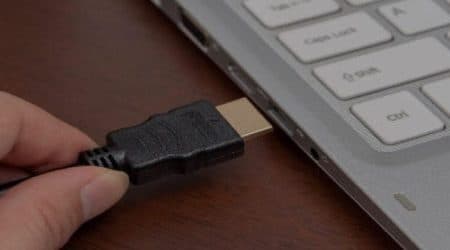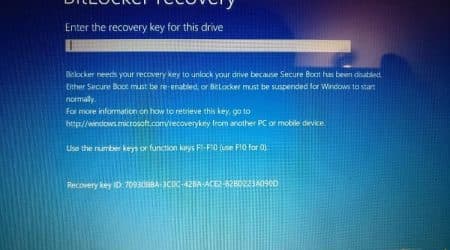In the ever-evolving landscape of technology, the tranquility of a smooth-running machine can often be disrupted by unwelcome sounds. When components designed for cooling begin to behave erratically, users may find themselves grappling with not only auditory disturbances but also the potential for diminished efficiency. Recognizing and addressing these issues not only enhances the auditory experience but can also lead to a more seamless interaction with one’s device.
The origins of such disturbances can range from a simple accumulation of dust to mechanical wear and tear, each contributing to an overall less-than-ideal atmosphere for optimal functioning. By understanding the underlying causes of these auditory interferences, one can take steps to restore harmony and elevate the overall user experience. A systematic approach can reveal practical solutions aimed at achieving a quieter environment whilst maintaining the integrity of the technology.
As the journey unfolds, it becomes evident that tackling these challenges is less about cumbersome procedures and more about a mindful assessment of both the components at play and the methods available for rectification. Through informed decisions and careful actions, tranquility can be reclaimed, allowing for an atmosphere conducive to productivity and creativity.
Identifying the Source of Fan Noise
Understanding the origin of unusual sounds emitted by internal components is crucial for maintaining a system’s functionality. Various parts can contribute to these disturbances, and pinpointing the precise source is necessary for addressing the issue effectively.
Key steps to determine the source include:
- Observing the pattern of the noise.
- Is the sound constant or intermittent?
- Does it change with different activities or workloads?
- Listening closely to identify the location.
- Is it coming from the central processing unit area?
- Could it be originating from the power supply unit?
- Do other components like the graphics card create disturbances?
- Utilizing software tools to monitor component temperatures and performance.
By methodically analyzing these aspects, a clearer picture of the situation can emerge, guiding further actions effectively. Identifying the source allows for targeted interventions that can enhance overall machine operation.
Common Causes of Loud Fan Sounds
Unwanted sounds emanating from cooling components can be quite bothersome and often indicate underlying issues within the system. Understanding the various factors that contribute to increased noise levels is essential for addressing the root causes effectively. Several conditions can lead to excess volume, impacting the overall user experience.
One primary reason for loud operation is the accumulation of dust and debris within the unit. Over time, particles can obstruct airflow and hinder the functioning of cooling mechanisms, forcing them to work harder than necessary. Another contributing element is aging hardware, as various components may become less efficient, resulting in louder operation due to increased strain.
Improper placement or installation can also amplify sound output. When equipment is not securely positioned, vibrations can cause noticeable disturbances. Additionally, thermal conditions can play a significant role; if the internal temperature exceeds normal levels, cooling devices might intensify their efforts, leading to heightened noise.
Finally, the quality of the components themselves can affect sound levels. Low-grade materials or poorly designed parts may inherently generate more noise during operation. Identifying and addressing these common sources is crucial to restoring a quieter and more pleasant computing environment.
Cleaning Dust from Your Computer
Accumulation of dust can significantly impact the functionality and longevity of internal components. Regular maintenance in the form of thorough cleaning is essential to prevent overheating and ensure optimal operation. This section will guide you through effective techniques to eliminate dust buildup.
Essential Tools
Before starting the cleaning process, gather the necessary tools:
- Soft brush or compressed air can
- Microfiber cloth
- Screwdriver set (if necessary)
- Anti-static wrist strap (optional, for added safety)
Cleaning Steps
- Power down the device and unplug all cables.
- Open the casing carefully, following the manufacturer’s guidelines.
- Use the brush or compressed air to remove dust from fans, vents, and components.
- Wipe surfaces gently with a microfiber cloth to capture any remaining particles.
- Reassemble the casing and reconnect all cables.
Regular attention to dust accumulation will ensure components operate efficiently and extend their lifespan. Make this maintenance a routine task for best results.
Upgrading Hardware for Better Cooling
Enhancing the internal environment of a system can significantly contribute to its longevity and efficiency. By selecting superior components, users can create a more favorable atmosphere for operation, leading to reduced thermal issues and quieter functioning.
Choosing High-Quality Airflow Solutions
Investing in advanced cooling mechanisms is essential for maintaining optimal temperatures. Consider upgrading to high-performance air coolers that provide superior heat dissipation. Additionally, replacing standard case fans with models designed for enhanced airflow can greatly improve circulation within the chassis, promoting a cooler overall environment.
Integrating Liquid Cooling Systems
For those seeking maximum efficiency, liquid cooling setups are an excellent alternative. These systems utilize coolant to absorb heat from critical components, thereby reducing temperatures more effectively than traditional methods. Furthermore, many liquid coolers operate with minimal noise, creating a serene workspace while maintaining optimal component functionality.
Adjusting Fan Settings in BIOS
Modifying the settings within the BIOS interface can lead to an enhanced operational experience by optimizing thermal management. Making changes to the cooling mechanisms can significantly reduce noise levels while ensuring the hardware runs within safe temperature ranges. This section explores the steps necessary to access and adjust these configurations efficiently.
To begin, reboot the system and enter the BIOS setup by pressing a designated key during startup, often indicated on the screen. Once inside the BIOS interface, navigate to the hardware monitoring or fan control section, where various parameters can be customized.
| Setting | Description |
|---|---|
| Fan Speed Control | Adjusts the RPM of the cooling unit based on temperature readings. |
| Temperature Thresholds | Sets the temperatures at which the cooling system activates or ramps up. |
| Profile Selection | Choose between preset profiles like ‘Silent’, ‘Standard’, or ‘Performance’. |
| Curve Adjustment | Allows for a customized fan speed curve depending on the processor temperature. |
After making the necessary adjustments, remember to save the changes before exiting the BIOS to ensure that the new configurations take effect. Properly fine-tuning these settings can lead to a more serene environment while maintaining optimal system temperatures.
Using Software to Control Fan Speed
Adjusting the operation of cooling components through software can significantly enhance the overall functionality of a system. By fine-tuning how these elements respond to thermal changes, users can achieve a quieter environment while maintaining optimal thermal conditions. Implementing such solutions offers not only a reduction in noise but also ensures that hardware operates within safe temperature thresholds.
Multiple applications are available that provide customizable options for regulating rotation speeds based on temperature readings. These programs typically come equipped with intuitive user interfaces, allowing individuals to set personalized profiles for various scenarios, such as gaming, browsing, or when the device is idle. Leveraging these tools can lead to a tailored experience that aligns with specific usage patterns and requirements.
Additionally, some software solutions provide real-time monitoring features, displaying current temperatures and speeds, which aid in making informed adjustments. Users can analyze data to understand how their systems respond under different loads, facilitating proactive management of thermal conditions. This level of control promotes longevity and reliability of internal components, making it an essential consideration for any proactive technology user.
Q&A: Fix a noisy computer fan
Why is my computer fan making so much noise, and how can I fix it?
If your computer fan is making a lot of noise, it could be due to several factors such as excessive CPU usage, dust buildup on the fan blades, or high temperatures inside the computer. The fan will spin faster and louder to keep your computer cool if the system is overheating. To reduce the noise, start by cleaning the dust from the fan blades and vents. If the noise persists, you might need to replace the fan. A computer optimization tool can also help lower CPU usage and reduce fan noise by optimizing system performance.
Why does my laptop fan get loud sometimes, especially when I turn on the computer?
A laptop fan may get loud if it’s trying to cool the CPU during startup or if there’s excessive heat generated by other components like the graphics card fan. When you turn on the computer, various processes run simultaneously, causing the fan to work harder. Make sure the laptop fan is clean and free from dust buildup, as dust can cause the fan to make noise. If the fan noise doesn’t reduce after a while, there could be a fan problem, and you may need to directly clean your CPU fan or even replace the old fan.
What are some causes of a noisy fan, and how can I prevent my desktop computer from making excessive noise?
Noisy PC fans can be caused by high CPU usage, clogged fan blades, or outdated cooling components. The power supply fan, graphics card fan, or built-in fan to blow cool air may all make noise if they’re struggling to keep your computer running smoothly. To prevent this, ensure your desktop PC is kept in a clean environment and regularly clean the dust from around your computer and inside the computer case. This will keep your computer cool and reduce fan noise. If the fan is still noisy, it may be time to consider upgrading to a new fan.
How do I make my computer fan quieter, and when should I replace the fan?
To make your computer fan quieter, you can try lowering CPU usage, cleaning dust from the fan blades, and ensuring good airflow around your computer or laptop. If the noise coming from your computer persists despite cleaning and lowering temperatures, it might indicate that the fan is worn out. An old fan or fan that is making loud noises may need replacement to keep your computer running smoothly. If the source of the noise is still unclear, check other components inside the computer to determine if a different fan is causing the problem.
Why is my computer fan so loud, and how can I fix it?
If your computer fan is loud, it usually indicates that the fan is working harder than usual to keep the system cool. This could happen because your computer is generating a lot of heat, possibly due to excessive CPU usage or blocked airflow. To fix this, find out why your computer is overheating and ensure there’s enough ventilation around the device. If the fan is still making noise, consider using compressed air to directly clean the fan blades or check if the fan needs to be replaced.
What causes excessive fan noise, and how do I reduce it?
Excessive fan noise can be caused by several factors, including dust buildup, high internal temperatures, or a fan that’s wearing out. When a computer’s fan spins faster to cool down the system, it may become loud if they’re struggling to maintain optimal temperatures. To reduce the noise, make sure the fan is clean and that airflow is unobstructed. If the fan noise doesn’t improve, it may need to be replaced. You can also monitor your computer’s temperature and lower CPU usage to prevent the fan from working harder than necessary.
Why does my laptop fan make noise when it spins, and what should I do?
Laptop fan noise occurs when the fan spins at higher speeds to keep the computer cool. This can be due to intense processing tasks or dust accumulation in the fan. If the computer fan noise is too loud, it’s a good idea to clean the fan and vents to allow for better airflow. If your laptop fan noise continues to be a problem even after cleaning, consider looking for software solutions to fix temperature issues or consult a technician to determine if a hardware component is causing the noise.
How do I address a noisy fan problem in my desktop PC?
If you’re experiencing a noisy fan problem, it’s important to identify the source. A desktop computer’s fan can be loud if they’re dealing with heat from components such as the CPU or graphics card. Make sure to clean dust from inside the computer and around the fan to improve airflow. In some cases, the computer fan making noise may indicate that the fan needs to be replaced or that another internal component is causing your computer to overheat. Monitoring the system’s temperature can help you decide whether to remove the fan and replace it or implement other cooling solutions.



